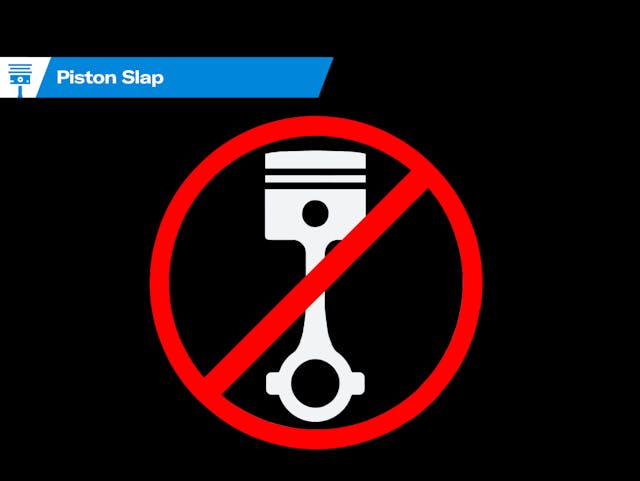Piston Slap: More questions please (but not about piston slap)

The time has come for me to ask you, Hagerty Community member, for more questions to keep the Piston Slap series alive. I am down to my last few, and they are all about those miserable Hyundai engines (that you’re likely tired of reading about). So, here are some previous stories that are the opposite, as they got people in the Hagerty Community in the mood to put on their thinking caps:
- We talked about the Jay Leno Effect.
- And the ideal used school bus for recreational activities.
- We even discussed importing a Buick Skylark from Egypt to the lovely city of Cincinnati, Ohio.
- One time we learned that old-school, cellular car phones can work in modern times.
But we discussed much, much more over the past three years. And it’s my wish to continue to enrich and enlighten everyone with such questions, so if you have a brain teaser of the automotive variety, I want to hear it. E-mail me at pistonslap@hagerty.com to add your question to the lineup.

I’d be remiss, however, if I didn’t tell everyone about the questions we should probably stop answering. My fear is we’ll lose audience members if they keep on reading about them. Here are said questions of concern, with the answers you need to know:
- Should I care about actual piston slap? No, because you probably don’t want to pay to get the engine block/piston rings adjusted to stop it. Just try to keep the sound from annoying you and motor on.
- Why do carbureted vehicles run poorly at times on modern fuels? Well, there are a lot of reasons, but I fear people will stop reading if I answer all these queries. Am I justified in that fear?
- Is my Hyundai/Kia about to lose its motor? Maybe, but maintenance records, the KSDS update, and a whole lotta patience with your local dealership and OEM representative (as they go through their behind-the-scenes machinations) is in order.
And with that I make one final plea: Do you have a question you’d like answered on Piston Slap? Send your queries to pistonslap@hagerty.com.
***
Check out the Hagerty Media homepage so you don’t miss a single story, or better yet, bookmark it. To get our best stories delivered right to your inbox, subscribe to our newsletters.


Well, before I ask a question, I’ll answer yours. You wrote, “I fear people will stop reading if I answer all these queries. Am I justified in that fear?” My answer is: not justified as far as I’m concerned. I won’t stop reading this column for any reason, because I always want to see what clever answers/comments come from that Sanjeev fella who occasionally pops in for a few words of wisdom and/or levity. He’s the reason I keep coming back, even if the question is something I have little or no interest in!
Okay, although I think I already know the answer, I’m going to throw out a question because, after having read previous posts, I know that not EVERYONE knows EVERYTHING, and we can often help each other learn new things (i.e. – it’s not all about what I can get out of this column, but what SOMEONE can get). Besides, maybe I don’t REALLY know the answer – or at least, not all of it.
My question:
How should one determine what cfm carburetor to install for best a) fuel mileage/drivability, and b) performance? I assume that there is some sort of calculation that takes into account displacement, intake runner type and flow numbers, cam specs, combustion chamber size, compression ratio, exhaust port size and actual exhaust design – all sorts of variables that could fill up a large blackboard with numbers and algebraic squiggles, etc., resulting in a number at the end that tells us exactly what size carb(s) to purchase, right?
Here is a CFM calculator: https://www.summitracing.com/newsandevents/calcsandtools/cfm-calculator
Surely, there is a more complicated way to calculate this, but why…?
Yes DUB6 there is just such a formula and it’s rather straightforward. It combines the engine’s displacement with the highest RPM at which it’s expected to operate. Since I don’t know it off hand I’ll leave it to Sanjeev to do the grunt work of locating it (if HE doesn’t know it off hand) and posting it.
A fantastic question indeed from DUB6! I am adding this to the queue right now.
Thanks to all that have emailed, and thanks in advance to those who will be commenting/emailing!
Being a fan of the spreadbore, the least CFM that you can get away with is best for economy and drivability. I suspect a lot of the formulas out there will send you in the other direction. There are some interesting videos out there of a guy installing a lawnmower carb on a Ford V8 and ending up with a perfectly drivable car that makes about 60 hp and gets some pretty good fuel mileage. Probably worth a full-blown article
I say keep the questions coming and also any crazy updates on your project(s).
I second Gary, I like to read about Sajeev’s projects and also the projects owned by other writers.
My question may not be all that great of a question. I’ve sucessfully (at least in my mind) set point gaps and timing in various cars. The reason I say sucessful is because they seem to run well afterwards. I have a dwell meter that I’ve been told to use, but I just don’t understand it or what it’s even telling me. How does dwell come into play or should I not worry about it? if I do need to worry about it, can you explain it in a “Dwell for Dummies” sort of way?
I disagree, Jeepcj5, I think that is an excellent question. I’ll bet there are oodles of readers out there who don’t “get” dwell, but are afraid to ask. I hope Sajeev is getting tons of questions to “add to the queue” for future columns, and that most folks are following directions and emailing them to him, unlike you or me…😛
Not a ton, but enough to keep things going for several months! And maybe that’s better, when I get a ton I also have to apologize in advance because some folks expect answers published quickly…which doesn’t happen in a weekly advice column.
Also the quality of questions is better this way, which hopefully makes for more interesting installments of Piston Slap for the readers. (all 48 of you!)
Surely, there are 49, sir.
Dwell is the amount of time (in percentage) that the points stay open, and is analogous to, but more precise than, gap. Similar in concept to duty cycle. Probably worth a full-blown article though
I like the feature and I have been racking my brain for a good question… and I have one. There is a lot of internet lore out there that you can assemble an entire car from scratch from mail-order parts. I believe this has actually been done for a 69 Camaro. This may be true for a handful of specific model years for a handful of specific models… but this is not generally the case, particularly for body panels. I have a 65 Impala SS… of which there were 200k built. If you go more general to just a 65 Impala, the number is 800k built. As I worked through my body woes, my mind was blown on exactly how many rusted body sections that my car had that are completely unobtainable. I ended up firing up the ol’ MIG and pushing through it one little piece of metal at a time… but what are the options for custom fab’d body parts (think trunk seal gutters, window frames, etc.), who out there has gone this route, and what generally does it cost?
“As I worked through my body woes, my mind was blown on exactly how many rusted body sections that my car had that are completely unobtainable.”
Man, that happens to me EVERY SINGLE DAY as I take my morning shower – it’s disheartening, is it not? Oh, wait, you said ‘body sections for your CAR’. You’re talking about rusted CAR parts, aren’t you? Sorry, I got way off topic there… 😅
If I can figure out how to fabricate knees and hips maybe I’ll run another 40 years 😉
In a nutshell dwell is simply the number of distributor degrees the points stay closed to assure adequate saturation of the coil. While I consider myself somewhat of a breaker point expert, I too would be interested in an in-depth article and would likely learn a few things along the way.
If you need a good article about dwell, I have several, along with some books that do a downtown job of explaining everything you ever wanted to know about ignition systems. They are in the barn though, and you’d have to stop by to get them. Tinkerah hit it on the head. If you think about the way points operate, with the cam lobe pushing open the points, imagine the points opening for just a tiny amount, then closing. Now you are dwelling the crap out of the coil well past saturation which is wasting energy and heating the coil. Not good. If you adjust the points toward the cam so they stay open longer, you are decreasing the amount of time the ignition coil is loaded and you might have a very weak spark. Also not good. You want to dwell the coil (current flowing into the coil) just long enough to to provide an adequate spark, and no more. Interesting thing is that most modern, well designed coils have enough headroom to make 50KV, and most ignition cables and spark plugs will break down and fail quickly at 50 KV. You really only need enough voltage to make a nice, clean spark. If you over-dwell, you will end up punching through the ignition cables or spark plugs, causing a misfire or wearing plugs out quickly.